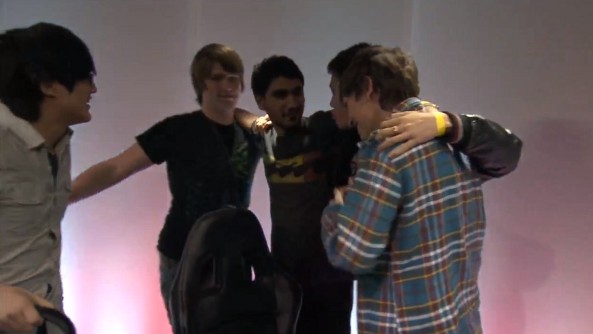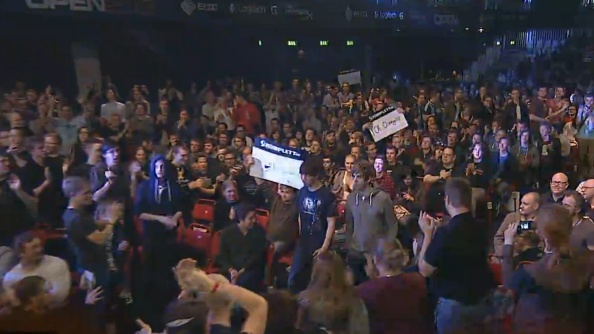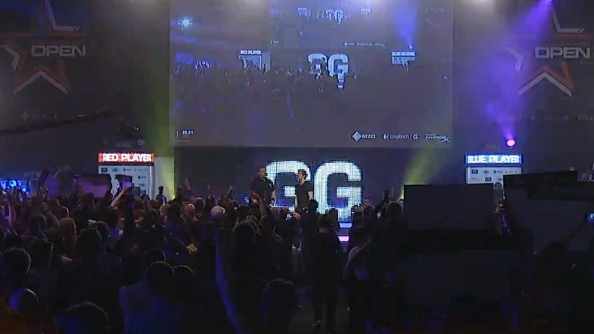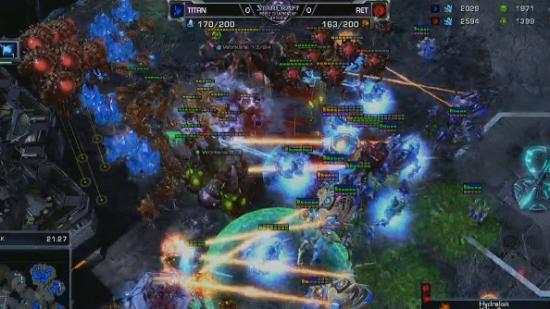What are eSports tournaments for? If you’re a fan, you’re looking for drama, suspense, and passion. Tournaments have to be more than just demonstrations of skill.
Two examples: over the weekend at Dreamhack, Sweden’s mercurial Protoss, NaNiwa, faced off against Brood War legend Jaedong in front of a delirious home crowd. The combination of star power, a close series, and the crowd’s fever-pitch excitement made it an unforgettable series.
Meanwhile, the League of Legends Championship Series is about narrative; about the long game. The story of this weekend wasn’t the prize pool, or the possibility of relegation. It was the astonishing twists and upsets that came from young teams that have finally come into their own.
The success of both Dreamhack and the LCS stand in sharp contrast to the stumbles of Blizzard’s Starcraft 2 World Championship Series.
The North American playoffs vindicated Riot’s approach to the LCS, both from a production standpoint and as a device for generating quality games. I was one of many skeptics when Riot announced their structure: would a North American division of LoL be worth watching over the course of a year?
NA’s best teams were lagging far behind Europe and Asia, and the new arrivals in the LCS were badly overmatched at the outset. Vulcun had promise but couldn’t close the deal. Good Game University often looked more like /Surrender Elementary School. How could League of Legends fans, with memories of the Season 2 Playoffs and IPL 5 fresh in their memories, abide a year of this?
What I didn’t anticipate was how quickly the LCS would compress the field. After a few weeks the newer teams started to challenge the veterans. In response to the new pressure, the veterans upped their game. This came to a head this weekend in a series of stunning upsets. Vulcun took down CLG in the first round, while GGU went on a run to the finals that started with a hard-fought three game series against Dignitas and continued with a stunning upset of Curse.

Is North America likely to fare well in the Season 3 playoffs this year, against the rest of the world’s best teams? Asia is always strong and the level of competition there tends to be higher. But what Riot understood with the LCS is that doesn’t really matter. GGU’s rise from near-relegation to Spring Season runner-up was the perfect Cinderella storyline, a story of stunning growth and evolution. Stories like theirs are what make the LCS so compelling.
And this is where Blizzard’s World Championship Series is failing.
I need a hero
We’re not learning enough about the players, many of whom feel like little more than a handle and a tournament record on Liquipedia. This is not an idle concern: StarCraft has developed a prestige problem because, unless the competitive field contains a number of the world’s best players, there is scarcely any other reason to watch. I have seen Root’s Minigun play maybe a dozen times and I still have zero feel for who he is or what defines his play style. He won’t make it far into a championship bracket (and was knocked out in WCS group play by two Koreans), so why bother caring?
The LCS solved that problem by hiving regional scenes off from one another, so that you didn’t have such major disparities. The WCS, despite having three regions, so far seems more like a long-form Korea versus The World tournament. That storyline is tired, and does a disservice to a ton of exciting players who commit the crime of of not being viable GSL challengers.
One of my favorite series of last year was Grubby vs. Slivko at IEM-Singapore. Grubby just caught fire during the series and, at one point, unleashed one of the most blistering Protoss offensives I ever saw in Wings of Liberty. Neither of these players is likely to be a quarterfinalist in a major Korean tournament, but their series was utterly riveting.
Regional play should have been an opportunity to showcase talents like this. They should give North American StarCraft fans something more to do than feel inadequate about their region and disappointed in their champions. Instead, North America has become what my friend and sometime PCGN eSports contributor Andrew Groen called “Code A heaven”, a place where regulars in the lower tiers Korean progaming have a better chance at success. This is not what competitive StarCraft needs, and it is not what sponsorship-starved and prize-money starved North American pros need.
The WCS in Europe is healthier, in part because the European progaming scene is usually healthier. It’s not overrun by Korean talent, and just yesterday it played host to a terrific three game series between Thorzain and Strelok; exactly the kind of quality regional play the WCS should showcasing.

I do sympathize with Blizzard’s problem. Last year’s WCS playoffs were compromised by how the regional system worked out. A number of the world’s top Korean players were wiped out of the competition during qualifiers. The final tournament was troubled, even if the bracket play should have given Blizzard more confidence in the ability of regional divisions to result in a competitive playoffs.
But Blizzard’s mania for identifying the world’s best has put the cart before the horse. Being the world’s greatest only matters if your game is truly international. Increasingly, and because of Korean domination of tournaments and prize money, StarCraft 2 is not. And the WCS is not going to change that if it simply emphasizes the inequalities that have cropped up across pro StarCraft.
The WCS is all about superlatives: the best players, the biggest prize pools. But you need look no further than DreamHack Stockholm to see why that’s not what really matters. DH Stockholm was a mid-sized tournament, with a $10,000 grand prize and only two days of play. But DreamHacks always feel like a celebration, a place where fans and pros connect over their love of the game and the communal experience of sports. It was a chance to see HuK turn in one of his strongest tournament performances in months, beating out Polt to land in the round of 16. We got to see NaNiwa at his best, running through the bracket to face Brood War legend Jaedong in front of a home crowd.

Watching the two players strut through the crowd on their way to the stage, fans reaching out to touch them and closing in behind them, cheering, was a reminder of how important the energy of a crowd can be, and how important it is that they forge a connection with players. It didn’t hurt that the game was between two of StarCraft’s best, that Naniwa turned in a top performance, or that the two pros engaged in a high-stakes series of mind games. As Naniwa came back to take the set, the crowd in Stockholm was making enough noise chanting his name that it started to sound like playoff hockey match.
I love competitive StarCraft 2, and it certainly doesn’t need to rival the LCS in scale or production values to be worthwhile. But Blizzard and their partners should be looking very closely at the LCS and at Dreamhack and finding ways to make pro StarCraft about more than who is the best. Right now the WCS is kind of a bloodless intellectual exercise, a year-long “who’d win in a fight” contest rather than a showcase of the talent and character of pro StarCraft players and the passion of the regions that produce them.
